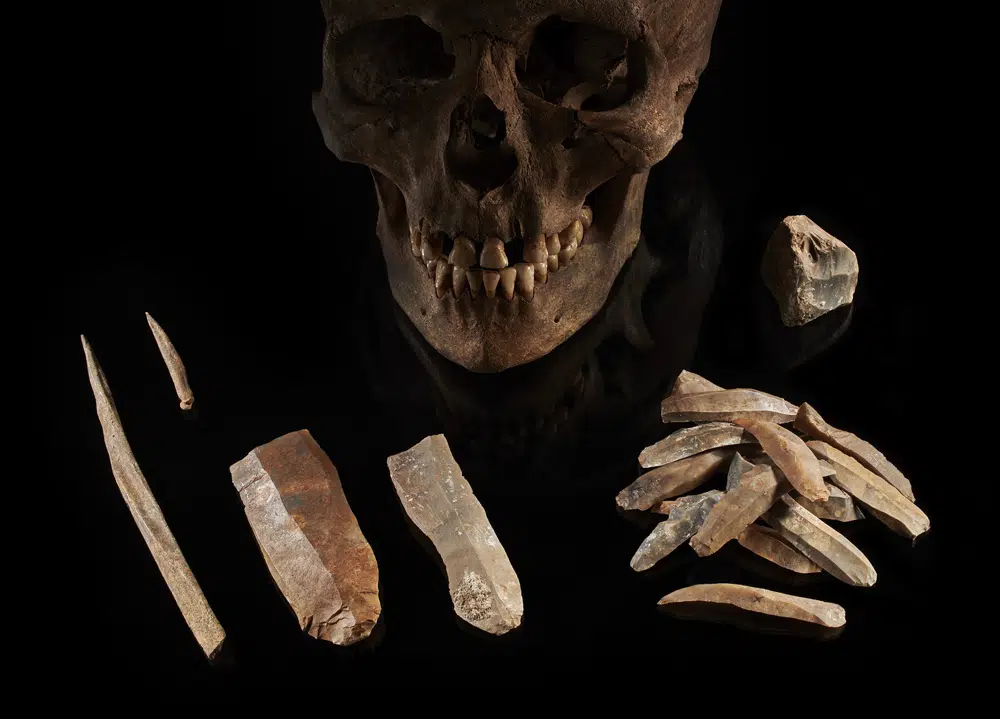News
Europeans Found Refuge In Spain During The Ice Age

(CTN NEWS) – BERLIN – The hunter-gatherers who dominated Europe 30,000 years ago sought safety from the last Ice Age in warmer locales, according to new research, but only those who took sanctuary in what is now Spain and Portugal appear to have survived.
The Gravettian culture, which refers to the people who once roamed Europe and created distinctive tools and artwork like the voluptuous “Venus” figures seen at ancient sites across the continent, has been traced using new genetic analyses of prehistoric human remains.
The study, which was released on Wednesday in the journal Nature, emphasizes the effect that migration and climate change had on early European settlers.
It shows that compared to their cousins who lived in the region that today includes portions of southern France, Spain, and Portugal.
Individuals who lived in what is now Italy when the ice extended southward about 25,000 years ago looked to have found themselves at a dead end.
Researchers Examined 110 DNA Samples Of Ice Age
According to Cosimo Posth, a researcher at the University of Tuebingen who led the study, those who migrated west survived the worst of the Ice Age, which is referred to by scientists as the last glacial maximum.
To our great amazement, the population in Italy that existed before the last glacial maximum completely vanishes, according to Post. “They were unsuccessful.”
Following the previous Ice Age, blue-eyed immigrants from the Balkans with a sprinkling of Near Eastern heritage replaced the dark-skinned, dark-eyed Gravettian population in Italy, according to genetic research of living individuals.
In addition to 240 previously identified ancient specimens, the researchers also examined 116 additional DNA samples, dating from roughly 45,000 to 5,000 years ago.
Once Europe warmed up again almost 15,000 years ago, the Gravettians, who had survived the Ice Age in Spain, combined with eastern immigrants and quickly repopulated the continent.
Taking control of it for thousands of years from Iberia to Poland and the British Isles.

This image provided by the Max Planck Institute shows a male skull with stone tools from Gross Fredenwalde, Germany, dated to about 7,000 years ago. This individual’s population lived side-by-side with the first European farmers without mixing. Research published Wednesday, March 1, 2023, (Volker Minkus/Brandenburgisches Landesamt für Denkmalpflege/Max Planck Institute via AP)
According to Posth, the final Spanish hunter-gatherer communities up until the advent of the first farmers, who came to Europe from Turkey some 8,000 years ago, bear the genetic imprint of the Gravettians.
Ludovic Orlando of the Center for Anthropobiology and Genomics in Toulouse, France, said the findings highlighted how the climatic change affected populations in Europe and that ancient human cultures weren’t always ethnically homogenous in an accompanying article published by Nature.
According to Orlando, who was not engaged in the study, the results also show how flexible Europe’s genetic history was.
He claimed that no present population could trace its ancestry back to one of the early human populations that settled on the continent.
Posth wants to learn more about the enigmatic Balkan migrants who came to Europe during the last glacial maximum. He also wants to learn more about the history of earlier European migration.
RELATED CTN NEWS:
Japan’s Birth Rate Drops Below 800,000 For The First Time In 2022


















![Play Online Blackjack In Australia [2024]: Top 10 Online Australian Blackjack Sites 21 Play Online Blackjack in Australia [2024]: Top 10 Online Australian Blackjack Sites](https://www.chiangraitimes.com/wp-content/uploads/2024/03/word-image-303235-1-80x80.jpeg)











